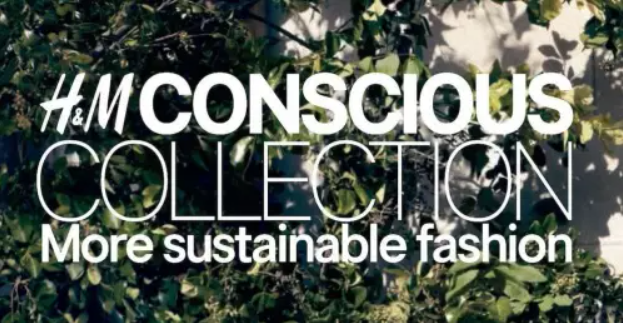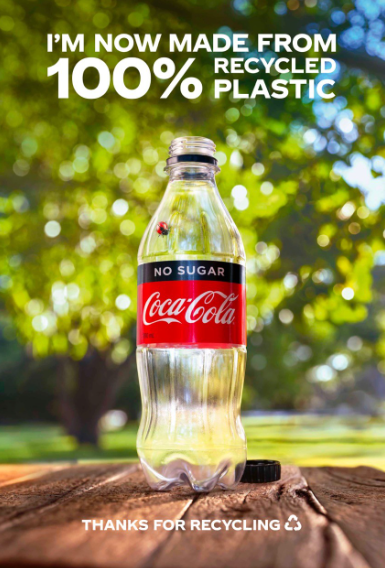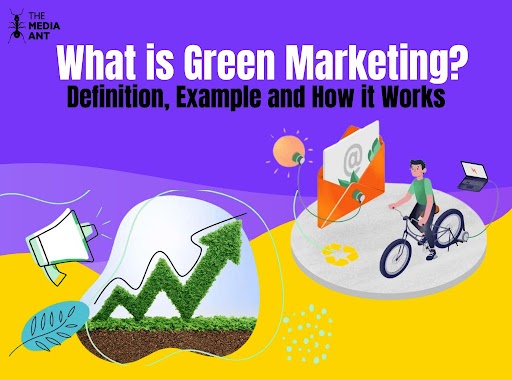Imagine if marketing had a vibrant, eco-conscious alter ego – that’s Green Marketing! It’s like the superhero of the advertising world, swooping in to save the planet one advertisement at a time.
In this eco-friendly marketing universe, slogans like “Reduce, Reuse, Recycle” are more than catchphrases; they’re guiding principles. Green marketing doesn’t just make you want to buy a product; it inspires you to be a part of a global movement toward a cleaner, greener world.
So, whether it’s promoting organic produce, electric cars, or sustainable fashion, green marketing is the storyteller that invites us all to be eco-warriors, fighting for a healthier planet, one purchase at a time.
Green marketing, also known as environmental marketing or sustainable marketing, refers to the promotion of products, services, or practices based on their environmental benefits. This strategy aligns business goals with eco-conscious values, aiming to reduce environmental impact while appealing to the growing segment of eco-aware consumers.
Recent studies found out that almost 90% of Millennials would choose a sustainable and eco-friendly product over any non-sustainable counterparts.
Green marketing strategies often highlight the following aspects:
- Environmental Features: Products are promoted based on their eco-friendly features, such as energy efficiency, recyclability, biodegradability, or reduced carbon footprint.
- Sustainability: Companies may emphasize their commitment to sustainable practices, such as responsibly sourced materials, ethical labor, and reducing waste.
- Certifications: Many green products carry certifications like ENERGY STAR, Fair Trade, or USDA Organic, which serve as endorsements of their environmental credentials.
- Educational Campaigns: Companies may engage in educational efforts to raise consumer awareness about environmental issues and the benefits of their green products.
- Green Packaging: Companies reduce packaging waste or use eco-friendly materials and highlight these choices in their marketing.
- Corporate Social Responsibility (CSR): Businesses may align their green marketing with broader CSR initiatives, showcasing their commitment to social and environmental causes.
- Cause Marketing: Companies often partner with environmental organizations or donate a portion of their profits to environmental causes, demonstrating their dedication to the planet.
How Green Marketing Works?
Green marketing works by promoting products or services based on their environmentally friendly attributes or sustainable practices. Here’s how it typically operates:
1. Product Development
Develop or modify products to be more environmentally friendly, using eco-friendly materials, reducing energy consumption, or designing for recyclability.
2. Environmental Attributes
Identify and emphasize specific environmental benefits, such as energy efficiency, reduced waste, sustainable materials, or adherence to environmental standards and certifications.
3. Messaging and Communication
Craft marketing messages and campaigns that highlight environmental attributes using slogans, logos, and visuals that convey eco-friendliness.
4. Educational Content
Include educational content in marketing to raise consumer awareness about environmental issues the product addresses, helping consumers understand the value of choosing eco-friendly options.
5. Certifications and Labels
Seek and display relevant certifications and labels, like ENERGY STAR, USDA Organic, or Fair Trade, to provide third-party validation of environmental claims.
6. Transparency
Maintain transparency about eco-friendly practices, steps taken to reduce environmental impact, and future sustainability goals.
7. Consumer Engagement
Engage with consumers through social media, blogs, and other channels to build a community of environmentally conscious customers, fostering loyalty and advocacy.
8. Monitoring and Improvement
Continuously monitor the environmental impact of products and services, and strive to improve sustainability through ongoing efforts.
Green marketing can be an effective way for businesses to differentiate themselves in the market, appeal to environmentally conscious consumers, and contribute to a more sustainable future. However, it’s essential for green marketing to be genuine and supported by concrete actions to avoid accusations of greenwashing and maintain trust with consumers.
10 Benefits of Green Marketing
- Attract Eco-Conscious Consumers: Appeal to a growing audience that prefers eco-friendly brands and is willing to pay more for sustainable products.
- Boost Brand Reputation: Show your commitment to the environment and earn trust by standing out as a responsible brand.
- Build Customer Loyalty: Aligning with customer values creates deeper emotional connections and long-term brand relationships.
- Increase Sales: Green products often drive higher demand as more consumers seek sustainable alternatives.
- Cut Operational Costs: Using recycled materials, reducing energy use, and minimizing waste saves money over time.
- Gain Investor Interest: Investors are actively looking to support businesses that prioritize sustainability and ESG practices.
- Improve Employee Morale: Employees feel proud to work for companies that care about the planet, boosting engagement and retention.
- Stand Out from Competitors: Green positioning helps you differentiate and stay relevant in a crowded market.
- Future-Proof Your Business: Stay ahead of regulations, consumer shifts, and sustainability trends by adopting green practices early.
- Create a Positive Impact: Beyond profit, green marketing helps you make a real difference for the environment and society.
5 Effective Green Marketing Strategies
Green marketing strategies are tactics and approaches used by businesses to promote environmentally friendly products, practices, and values. These strategies aim to appeal to eco-conscious consumers, raise awareness about sustainability, and demonstrate a commitment to environmental responsibility. Here are some effective green marketing strategies
1. Highlight Authentic Sustainability Practices
Emphasize genuine eco-friendly practices and initiatives within your company. Ensure that your sustainability claims are supported by concrete actions, such as reducing waste, using renewable energy, and sourcing sustainable materials. Authenticity builds trust with consumers.
2. Leverage Certifications and Eco-Labels
Utilize reputable certifications and eco-labels to validate your environmental claims. Certifications like ENERGY STAR, USDA Organic, and Fair Trade can provide third-party endorsement, adding credibility and helping consumers identify truly sustainable products.
3. Create Engaging Educational Content
Develop content that educates consumers about environmental issues and the benefits of your green products. Use blogs, videos, infographics, and social media to inform and engage your audience, helping them understand the positive impact of their choices.
4. Foster Community and Consumer Engagement
Build a community of environmentally conscious consumers through social media, events, and interactive platforms. Encourage dialogue, gather feedback, and involve customers in sustainability initiatives. Engaged consumers are more likely to become loyal advocates for your brand.
5. Implement Transparent Reporting and Communication
Maintain transparency in your sustainability efforts by regularly reporting on your environmental impact and progress towards sustainability goals. Share detailed information about your practices, achievements, and future plans to build trust and demonstrate accountability.
Examples of Green Marketing
1. MAMAEARTH
A highly regarded organic brand has gained prominence for its commitment to recycling, minimizing plastic usage, and planting over 2,000 mangroves and trees. The company’s journey began when Ghazal Alagh and her husband were anticipating the arrival of their first child. Initially, the brand was created with a focus on meeting the needs of newborns and new mothers. However, as time passed, it gradually broadened its scope and diversified its product offerings. MamaEarth is synonymous with using mild, gentle ingredients that are free from harsh chemicals.
Case Study- Mamaearth Celebrates ‘Earth Day’ Everyday
A brand rooted in the values of honesty, natural ingredients, and safety, Mamaearth holds the belief that positive change begins with the small daily actions each of us can take. In celebration of this year’s theme, “Invest In our Planet,” the brand has introduced a campaign through a digital video that captures the spirit of World Earth Day.
Conceptualized by Korra Worldwide, the film introduces us to Shreya, a young girl who serves as the central character in this campaign for Mamaearth, where she holds the role of a “goodness specialist.” Shreya underscores the idea that at Mamaearth, every day is synonymous with Earth Day, highlighting key initiatives.
The video kicks off with the Plantgoodness project, focused on extensive tree planting. Shreya is initially overwhelmed by the sheer number of trees planted, which totals around 300,000. To make this more relatable, she envisions it as an amusement park, likening 3 lakh trees to covering an area equivalent to 2200 acres, which is roughly the space occupied by 22 amusement parks.
Moving on, Shreya simplifies the recycling of plastic by drawing a parallel to the weight of 854 elephants, signifying the amount of plastic recycled. She then discusses the Goodbooks initiative, which utilizes one-sided used paper, visualizing the 1 lakh used sheets employed by Mamaearth as equivalent to the size of a football field, promoting paper reuse to reduce wastage.
Shreya proceeds to emphasize Mamaearth’s unwavering commitment to producing products without any harmful toxins. She contrasts this with the abundance of toxins in the world, surpassing even the number of days in three years, while Mamaearth’s products remain toxin-free. As she continues, an animal comes into view on her screen, and she explains the brand’s dedication to cruelty-free products, certified by PETA, with zero harm to animals. Shreya and Mamaearth together celebrate Earth Day every day through these small acts of goodness.
The campaign’s central message is “Every day is Earth Day at Mamaearth.”
Mamaearth actively supports the environment by adopting a Plastic Positive approach, ensuring cruelty-free practices, reusing paper through the creation of Goodbooks, and planting over 300,000 trees through the Plant Goodness initiative. Their commitment to “Goodness Inside” extends not only to their products but also to actions aimed at making the world a better place for future generations.
Here are some more Green Marketing Examples
1. Tesla
Tesla is known for its electric vehicles (EVs) that produce zero tailpipe emissions. They heavily promote the environmental benefits of their cars, emphasizing their contribution to reducing air pollution and greenhouse gas emissions.
2. The Body Shop
The Body Shop is known for its ethical and sustainable approach to beauty products. They emphasize cruelty-free testing, sustainable sourcing, and recyclable packaging.
3. IKEA
IKEA promotes sustainable and eco-friendly practices in various ways, from using sustainable wood sourcing to offering energy-efficient appliances and promoting recycling in their stores.
4. Unilever
Unilever, the parent company of brands like Dove and Ben & Jerry’s, has made a commitment to reduce its environmental footprint. They promote sustainability through various initiatives, such as sustainable sourcing of ingredients and reducing plastic waste.
5. Starbucks
Starbucks has made efforts to reduce waste by offering reusable cups, incentivizing customers to bring their own, and investing in greener store designs and practices.
Features of Green Marketing
1. Eco-Friendly Product Design
Green marketing emphasizes the creation of products that are environmentally friendly. This includes using sustainable materials, minimizing waste during production, ensuring products are recyclable or biodegradable, and reducing the carbon footprint of the product lifecycle.
2. Sustainability Certifications
Products and companies involved in green marketing often carry certifications that validate their environmental claims. Examples include ENERGY STAR for energy efficiency, USDA Organic for organic products, and Fair Trade for ethical sourcing. These certifications provide third-party validation and help consumers make informed choices.
3. Transparent Communication
A key feature of green marketing is transparency. Companies openly share information about their environmental practices, sustainability goals, and the steps they are taking to minimize their environmental impact. Honest communication builds consumer trust and loyalty.
4. Educational Initiatives
Green marketing often includes efforts to educate consumers about environmental issues and the benefits of sustainable products. This can involve creating informative content, hosting events, or partnering with environmental organizations to raise awareness and promote eco-friendly choices.
5. Consumer Engagement and Community Building
Green marketing strategies involve actively engaging with consumers and building a community of like-minded individuals. Through social media, events, and other interactive platforms, companies can foster a sense of community, gather feedback, and encourage consumer participation in sustainability initiatives.
What is Greenwashing?
Greenwashing is a deceptive marketing practice in which a company or organization exaggerates or falsely claims to be environmentally friendly or socially responsible when its actions and products do not genuinely support such claims. In essence, greenwashing involves using misleading advertising or branding to make a company appear more environmentally conscious or socially responsible than it actually is.
Common Tactics of Greenwashing
- False Labels: Using environmental certifications or labels that are not legitimate or misrepresenting the significance of such certifications.
- Vague Terminology: Using ambiguous or undefined terms like “eco-friendly,” “natural,” or “green” without providing specific evidence or context to support these claims.
- Misleading Imagery: Employing images or visuals that suggest environmental responsibility or social consciousness without substantial backing.
- Hidden Trade-offs: Promoting one environmental attribute of a product while ignoring other negative environmental impacts it may have.
- Irrelevant Claims: Making claims that are technically true but do not have a significant impact on the overall environmental or social performance of the product.
- Lack of Proof: Failing to provide evidence or data to support sustainability claims or making claims without third-party verification.
- Exaggerated Claims: Exaggerating the environmental or social benefits of a product or service.
- Ignoring the Bigger Picture: Focusing on minor environmental improvements while ignoring more substantial issues within the company’s operations.
- Diversion Tactics: Shifting attention away from negative environmental or social practices by highlighting unrelated positive aspects.
1. ASCI on ‘Greenwashing’ claims
- ASCI is set to ensure companies provide proof of their ‘green’ claims.
- False pro-environment claims made by brands across sectors like fast fashion, air-conditioners, cars, foods, cosmetics, etc.
- Words such as ‘eco-friendly, energy efficient. Biodegradable, organic, net-zero plastic, green’ not used without verification proof.
- ‘Greenwashing’ is classified as an unfair trade practice by the Consumer Protection Act, 2019.
- Green labels given to products that meet energy efficiency, water conservation, and sustainable raw materials sourcing norms.
- Eg.: Sanitary napkins claim to be biodegradable, however at an overall level they aren’t biodegradable. Some elements of it might be biodegradable, hence, the claim is misleading.
2. H&M Under the ‘Greenwashing’ Radar
In the fast-fashion industry, there’s a notable case where companies claim their products are sustainable and made from eco-friendly materials. However, this industry is known for its severe ecological impact, and its products often stem from materials with significant environmental consequences. A recent study finds that almost 60% of sustainability claims by certain fashion brands in India and their high-profile/so-called designer status could be classed as ‘unsubstantiated’ and ‘misleading’ and these numbers are going larger every season.

One instance involves the fast fashion giant H&M, which faced accusations of greenwashing in India. Despite promoting sustainability and eco-consciousness in their marketing, H&M received criticism for their extensive mass production practices. This large-scale production contributes significantly to the fashion industry’s substantial carbon footprint and waste generation.
Additionally, a well-known detergent brand in India once marketed its product as “100% natural” and “completely safe for the environment.” However, investigations later revealed that the detergent contained synthetic ingredients and chemicals that posed environmental hazards.
3. Coca Cola’s False Claims
A report from the Changing Markets Foundation asserts that major brands, including Coca-Cola and Unilever, are engaged in misleading greenwashing when it comes to their claims about eco-friendly plastic packaging. The report argues that assertions of using “ocean-bound” or “recyclable” plastic to combat plastic pollution are frequently used examples of this deceptive practice.

According to the report, these claims lack substantial evidence regarding their effectiveness in addressing the plastic pollution crisis and are intended to obscure the true environmental impact of plastic from consumers.
Coca-Cola, the report says, has spent millions promoting an innovation which says that its bottles are 25% marine plastic, but does not mention that the company is the world’s biggest plastic polluter.
What is LOHAS?
LOHAS stands for Lifestyles of Health and Sustainability. It refers to a segment of consumers who prioritize eco-friendly, ethical, and health-conscious choices in their daily lives. These individuals care about personal well-being, environmental responsibility, and social impact, and they actively support brands that reflect these values.
LOHAS and Green Marketing
LOHAS consumers are the core target audience for green marketing. Since green marketing focuses on promoting environmentally friendly products and sustainable business practices, it naturally aligns with the values of LOHAS individuals. Brands that engage in genuine green marketing can build strong loyalty and trust among LOHAS consumers by:
- Highlighting sustainable ingredients and practices
- Using eco-friendly packaging
- Supporting social and environmental causes
- Being transparent and avoiding greenwashing
In short, green marketing is the strategy, and LOHAS consumers are the ideal audience driving its success.
FAQ Related to Green Marketing & Advertising
What is green advertisement?
A green advertisement is a type of promotional content or campaign that focuses on environmentally friendly products, practices, or values. It aims to raise awareness about ecological issues, promote sustainable behaviors, and encourage consumers to make environmentally responsible choices. Green advertisements often use messaging, visuals, and storytelling that emphasize the importance of protecting the environment and conserving natural resources.
What is the example of green advertising?
Mamaearth is a perfect example of Green marketing, from promoting sustainable products, planting trees to using recyclable and reusable materials they have been eco-friendly.
What are the 4 pieces of green marketing?
Green marketing, also known as eco-marketing or sustainable marketing, involves promoting products or services based on their environmental benefits. The “Four Ps of Green Marketing” are a variation of the traditional marketing mix (the Four Ps) customized for eco-friendly and sustainable marketing. They are:
- Product
- Price
- Place
- Promotion
What are the benefits of green advertising?
Benefits of green advertising:
- Attracts environmentally conscious consumers.
- Enhances brand image and reputation.
- Supports sustainability efforts.
- Drives sales of eco-friendly products.
- Contributes to a greener future.
What are the features of green advertising?
Features of green advertising include:
- Environmental Focus: Emphasizes eco-friendly products, practices, or values.
- Sustainability: Promotes sustainable behaviors and choices.
- Educational: Raises awareness about environmental issues.
- Visuals: Uses nature and green imagery.
- Transparency: Provides evidence and certifications for eco-claims.
- Consumer Engagement: Encourages eco-conscious actions.
- Positive Impact: Highlights contributions to a healthier planet.






“Green Marketing” is a vital concept in today’s eco-conscious world, and this article provides valuable insights. It explores how businesses can promote sustainable practices and products, benefiting both the environment and their bottom line. Emphasizing ethical branding and eco-friendly initiatives, it encourages responsible consumer choices. This article serves as a guide for companies looking to align their values with sustainability, fostering goodwill and long-term success.